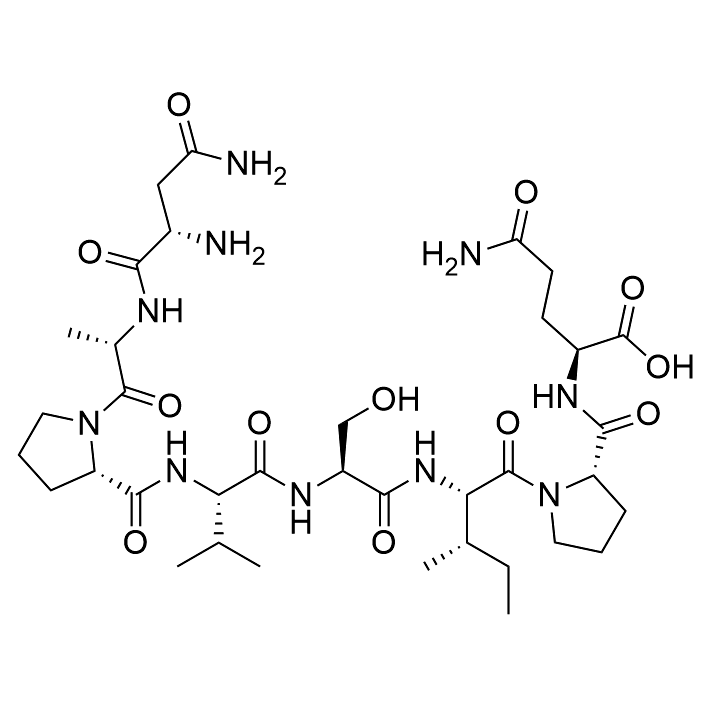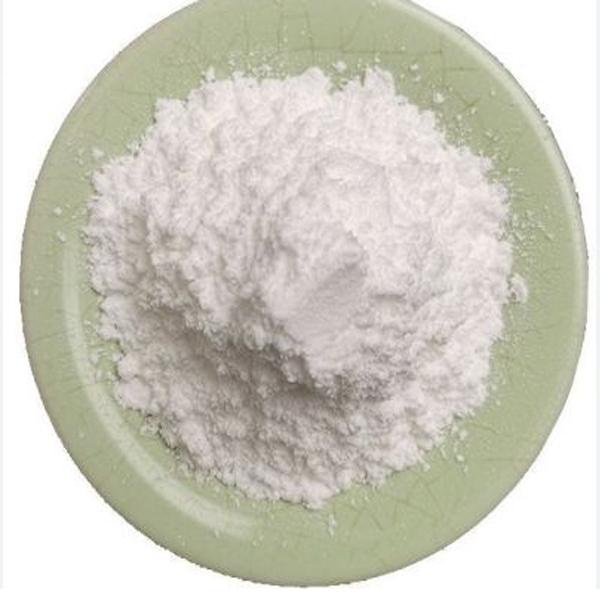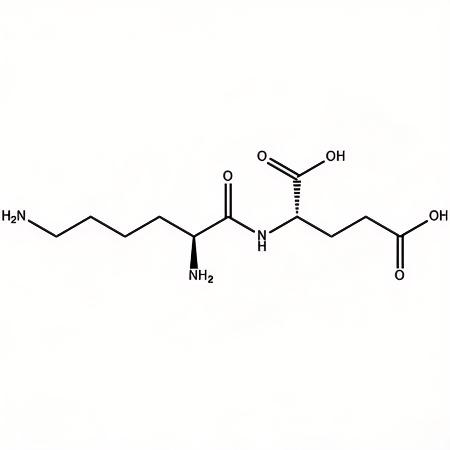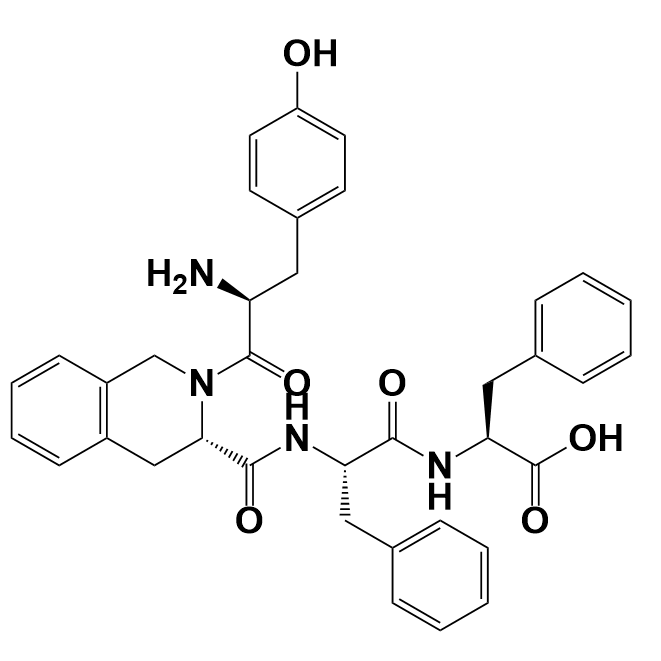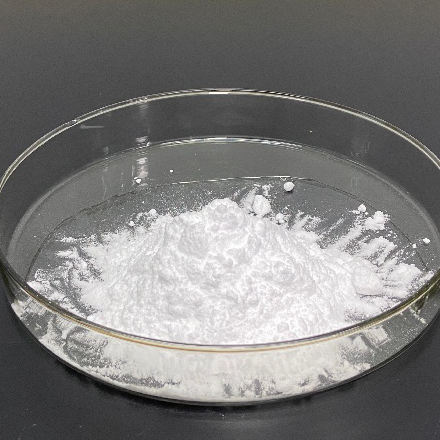Davunetide Manufacturer/211439-12-2/Peptide R&D
Description
Davunetide is a peptide composed of 8 amino acids, derived from the neuroprotective protein ADNP. It possesses neuroprotective, neurotrophic, and cognitive-protective properties. Davunetide is also a microtubule-stabilizing peptide that can stabilize microtubule proteins in neurons and can cross the blood-brain barrier, capable of inhibiting the aggregation of beta-amyloid (Aβ) and the neurotoxicity it induces.
Specifications
Apperance: White to off-white powder
Purity(HPLC): ≥98.0%
Single Impurity: ≤2.0%
Acetate Content(HPLC): 5.0%~12.0%
Water Content (Karl Fischer): ≤10.0%
Peptide Content: ≥80.0%
Packing and Shipping: Low temperature, vacuum packing, accurate to mg as required.
How To Order?
1. Contact us directly by phone or email: +86-13735575465, sales1@gotopbio.com.
2. Order online. Please fill out the order online form.
3. Provide peptide name, CAS No. or sequence, purity and modification if required, quantity, etc. we will provide a quotation within 2 hours.
4. Order conformation by duly signed sales contract and NDA(non disclosure agreement) or confidential agreement.
5. We will continuously update the order progress in time.
6. Peptide delivery by DHL, Fedex or others, and HPLC, MS, COA will be provided along with the cargo.
7. Refund policy will be followed if any discrepancy of our quality or service.
8. After-sale service: If our clients have any questions about our peptide during experiment, please feel free to contact us and we will respond to it in a short time.
All products of the company are only used for scientific research purpose, it’s prohibited to be directly used by any individuals on human body.
FAQ:
How do you dissolve polypeptides?
The solubility of polypeptide depends mainly on its primary and secondary structure, the nature of modification label, solvent type and final concentration. If the peptide is insoluble in water, ultrasound can help dissolve it. For basic peptide, it is recommended to dissolve with 10% acetic acid; For acidic peptides, dissolution with 10%NH4HCO3 is recommended. Organic solvents can also be added to insoluble polypeptides. The peptide is dissolved in the least amount of organic solvent (e.g., DMSO, DMF, isopropyl alcohol, methanol, etc.). It is highly recommended that the peptide be dissolved in the organic solvent first and then slowly added to water or other buffer until the desired concentration.
What is Net Peptide Content?
It is important to understand the difference between net peptide content and total peptide weight (gross weight). In general, peptide lyophilized powder samples contain not only peptides, but also other substances such as water, solvents absorbed by peptides, counterions, and salts. The total peptide weight (gross weight) refers to the weight of all these mixtures. The net peptide content is relative to the non-peptide substances, balanced ions and water, and after removing these, the remaining is the net peptide content. The net peptide content can be determined by nitrogen analysis or amino acid composition analysis, usually accounting for 50-80% of the total peptide weight. Net peptide content is different from peptide purity, which refers to the percentage of peptide of interest in a sample.
What are the advantages of Pharmaceutical Peptide?
The rapid development of Pharmaceutical Peptide benefits from their significant advantages:
• Significant activity, relatively strong specificity, good affinity for receptors, lower toxicity, and not easily accumulating in the body;
• Compared to protein-based macromolecular drugs, except for peptide vaccines, peptide drugs have relatively low immunogenicity, require smaller dosages, and have higher unit activity;
• Easy to modify and produce, and can even be addressed through synthetic methods.
I need a cyclic peptide, which contains a tryptophan, will it be oxidized?
The oxidation of tryptophan is a common phenomenon in peptide oxidation, and peptides are usually cyclized before purification. If the oxidation of tryptophan occurs, the retention time of the peptide on the HPLC column will change, and the oxidation can be removed by purification. Furthermore, oxidized peptides can also be detected by MS.
What length of peptide is appropriate?
Peptide synthesis needs to consider factors such as the length, charge, and hydrophilicity of the peptide. The longer the length, the purity and yield of the crude synthetic product decrease, and the difficulty of purification and the chance of non-synthesis will be greater. Of course, the sequence of the functional region of the polypeptide cannot be changed, but for the smooth synthesis of the polypeptide, sometimes some auxiliary amino acids have to be added to the upstream and downstream of the functional take to improve the solubility and hydrophilicity of the polypeptide. If the polypeptide is too short, there may also be problems with synthesis, the main problem is that the synthetic polypeptide has a certain difficulty in the post-processing process, and the polypeptide below 5 peptides generally has hydrophobic amino acids, otherwise the post-processing is more difficult. Peptides below 15 amino acid residues generally have satisfactory yields and yields.

